The big 140 trip planned for this year was a flight to Mendoza. Mendoza, home of many of Argentina’s famous wines, is located 420 nautical miles west of Buenos Aires. Only 200 miles more to Santiago de Chile. My plan was to fly the 140 to a club’s airfield at Mendoza and leave it there for a week while hiking in the Andes with Leon. Then, make a detour to La Rioja before returning to Matanza. But a plan is only a plan, reality kills most plans.
A 140 is a 2-seater aircraft made for initial flight training. Neither Leon, nor I carry the weight of the average 2023-american man, but we are probably heavier than the average 1947-american, for who the little aircraft had been built. You don’t need to be a weight & balance expert to know that baggage mass must be strictly limited to allow to carry the necessary fuel.
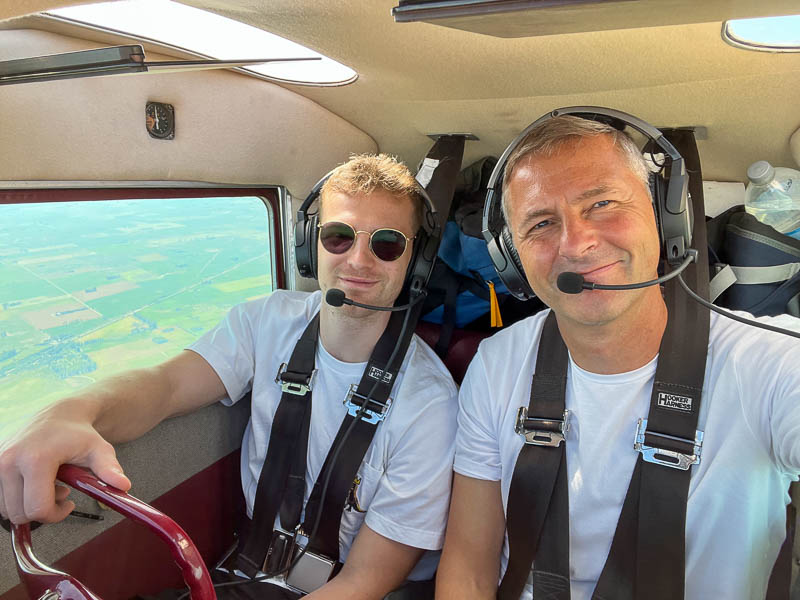
From Matanza we flew to Vedia, basically following ruta 7, the highway from Buenos Aires to Mendoza, which follows the old railway tracks. Terrestrial navigation was very easy, weather was nice, winds light, the machine performed flawlessly and with increasing temperature we increased our altitude, to keep temperatures comfortable. The 140 rudder is sensible. Hiking boots are not good for flying a taildragger, in cruise it is much more comfortable to fly with socks:
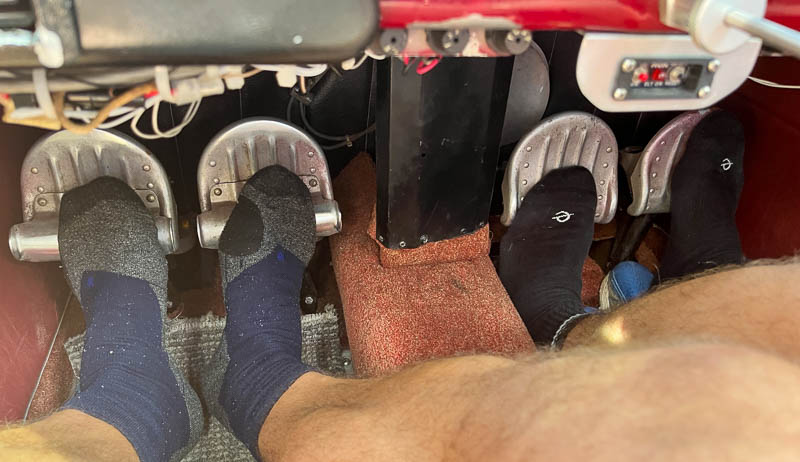
After 2 hours, Vedia came into few. Patricio Sus, jefe del aerodromo in Vedia told me via WhatsApp that they use 123,5 Avgas is available and that some crop duster (fumigadores) activity may be expected. But when we approached all is quiet. I checked the windsock and landed on runway 35.
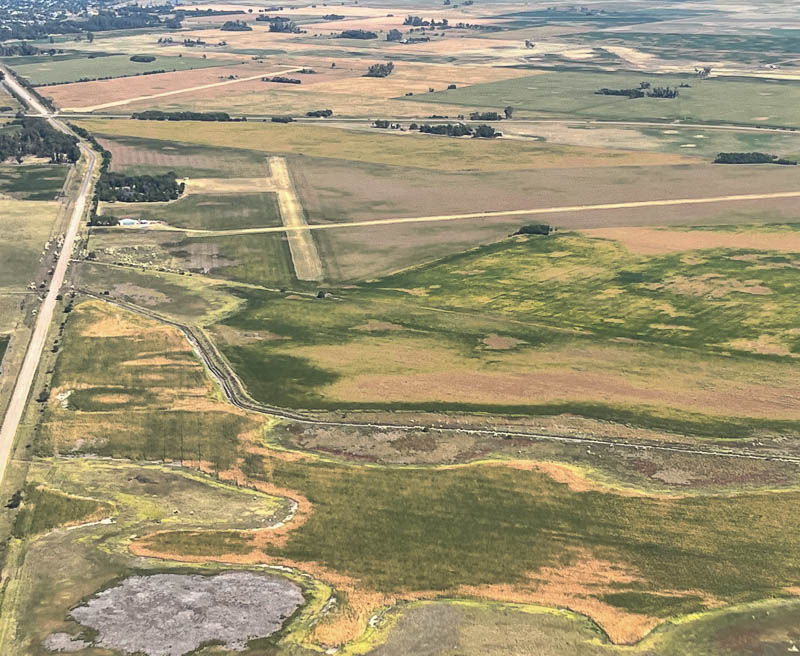
When we landed, we were immediately directed to the gas station. Fueling procedures and equipment vary a bit, sometimes the aircraft can be properly grounded, sometimes not. Sometimes the pump seems 50 years old and leaky, sometimes it is new and shiny. Self-service is never possible, and I always pay cash. Tips or extra charges are not only not expected, but regularly refused. As usual when previously advised, everything was done to assure a quick turnaround. Different from the US, there are no curtesy cars in South America. But they usually drive you to the next restaurant, if wished and – again – they refuse any compensation for this service. The hospitality of the aeroclubs in Argentina is overwhelming.
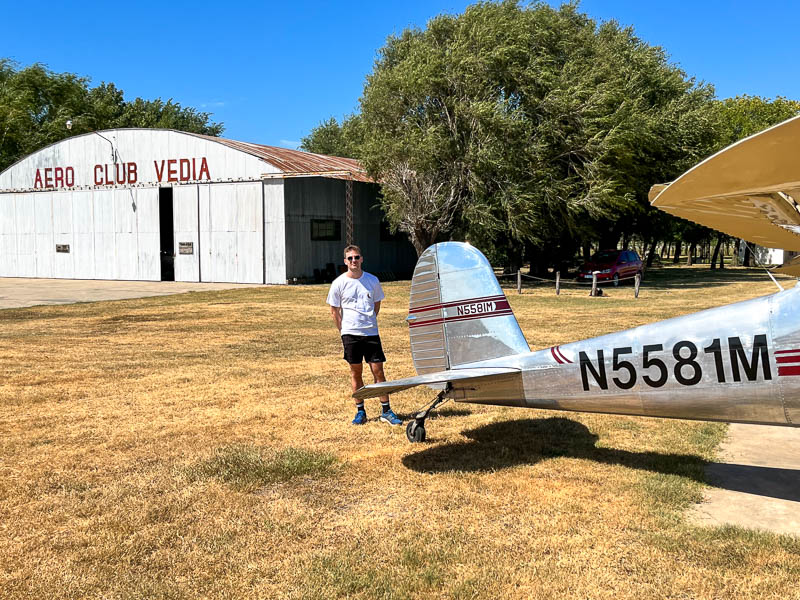
We take off again, our destination now is Villa Mercedes. We plan to spend the night there and continue tomorrow to Mendoza, taking it easy, 5 hours flying being enough for the day.
Again, we follow ruta 7. It is afternoon and warmer now. Whenever I reduce the power to a descent cruise setting, the speed goes down and I have to increase the attitude to keep altitude, reducing the cooling airflow. The engine is running too hot and I try to compensate with the mixture and by increasing power again. You shouldn’t fly a fully loaded 140 in this climate.
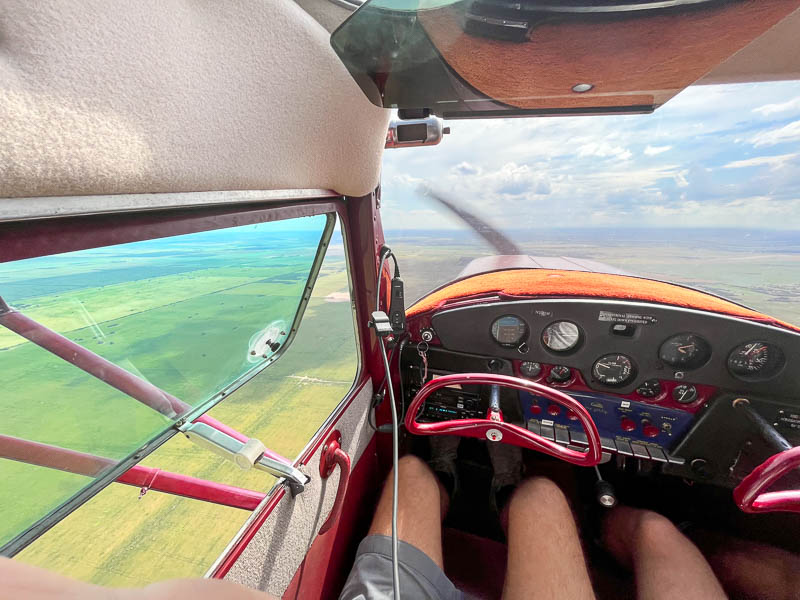
Villa Mercedes is located within the control zone of Villa Reynolds (SAOR). But this bigger airport is closed, today being a Sunday. When nobody answered on the Tower frequency, I assumed that the control zone does not exist today, so I continued to Villa Mercedes without a specific clearance.
Martin, the young man taking care of the airport, had advised me that they use 124.0 and a liter of Avgas costs 455 pesos, a bit more than 1 Euro (or US Dollar, it is nearly the same). When we approached, he gave me wind readings using a portable radio, a nice service not often found in Argentina. I broadcasted my intention to land on runway 19, but on final I saw that they call it 20 now. How many years until we change that nonsense of flying magnetic instead of true headings?
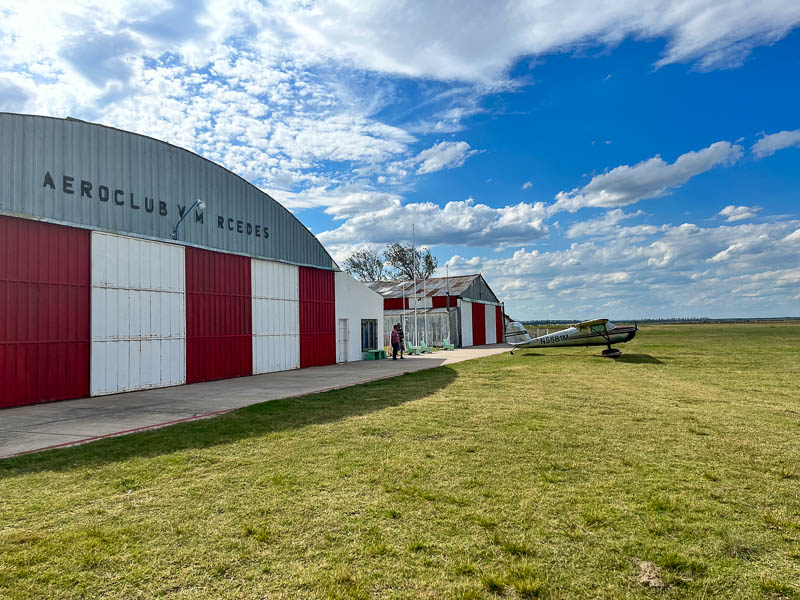
Leon and I were prepared for a camping tour and eager to try our equipment and set up tent before hitting the Andes, but Martin’s father Carlos drove us to a nearby hotel and presented us at the reception as his friends. The price was only half of what booking.com showed us. The air condition was noisy, but after 5 hours in a 140, you just notice a faint whisper. Villa Mercedes, altitude 1670 ft, was a bit cooler than Buenos Aires, but temperatures still peaked above 35 degrees Centigrade coupled with high humidity. The hotel pool was only half full and not deep enough for swimming, but still relaxing and refreshing, after an arduous day.
Next morning, everything changed. It was cooler now and – cloudy. Being a Monday, AIP at nearby Villa Reynolds was open and they defined the clouds as being too low to leave the control zone.
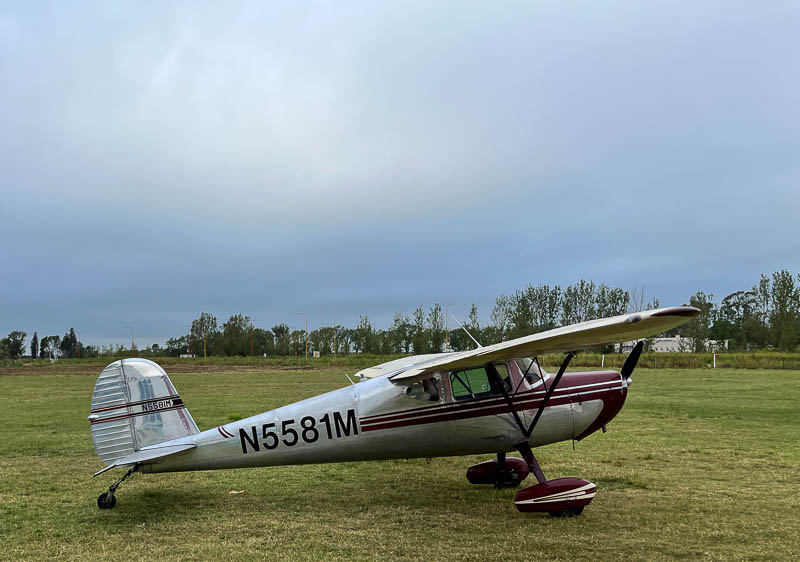
Martin’s weather station did not include an instrument to measure the height of the could base, so I flew a pattern to find out. Cloud base was in about 800 ft. Not the best idea to continue in this weather and I don’t even know, if they offer special VFR in Argentina. Better to wait for better weather. I used the time to do some pattern work, first with Leon, then with Martin.
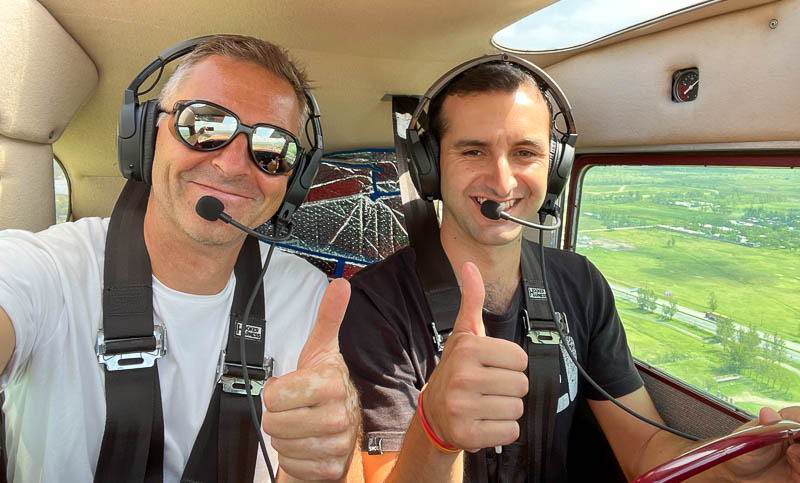
While flying the pattern, I observed that the generator did not charge the battery. Amperemeter showed a discharge and the Voltmeter only 12V and not the 14V usually indicated when the battery is being charged. Villa Mercedes, we have a problem.
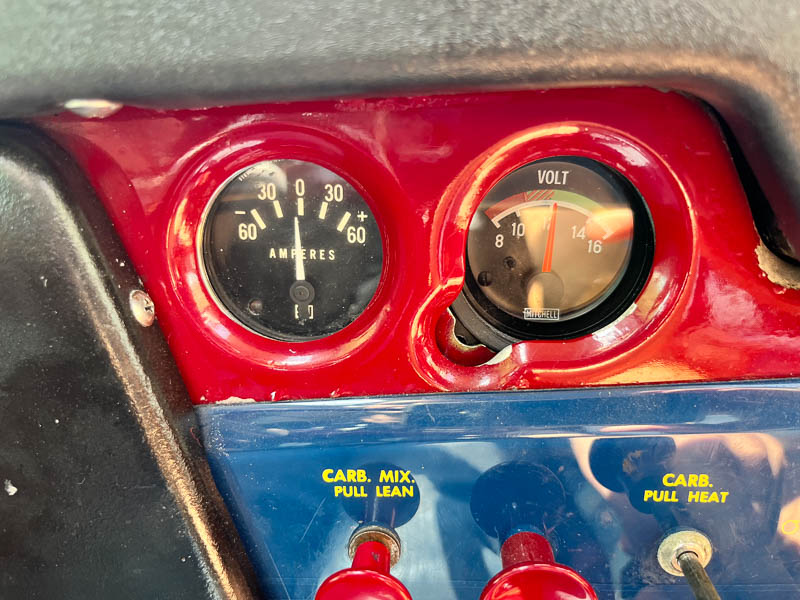
Some readers may remember that this is not the first time, N5581M had electrical problems. Last time was in 2019, when flying from Mexico to El Salvador. Yes, a mechanic is available but only in a few days, so what do we do now? Fly battery only in marginal weather towards the mountains? To make things worse, a representative from the aeroclub in Mendoza told me that the club’s airfield is closed during the next days.
Leon and I decided to abandon the 140 in Villa Mercedes and continue by bus. (Passenger trains no longer run to Mendoza and commercial flights are not available.) The bus ticket for the 6-hour bus ride was inexpensive, but purchasing the ticket over the website was tedious. We encountered the usual problem. All the websites here assume that the customer has a national ID number, a DNI. When a GUI allows switching to other ID methods, e. g. passport, then they still assume a number, not the mixture of letters and numbers used in German passports. So, you must make up a number and try to meet the internal check requirements applied (but not stated) by the website. But what really bothers is that whenever the website’s java code thinks you entered something wrong, it deletes all entries without telling the user which specific entry was wrong. To make things worse, you have to reuse your made-up fake passport number, because when you purchase tickets the next time, the system believes the first one you entered was the correct one.
The bus left in a few hours. Carlos showed us the city’s railway museum with lots of 19th and 20th century equipment. Villa Mercedes was founded when the railway to Mendoza was built. It must have been a big blow for the city, when it closed.
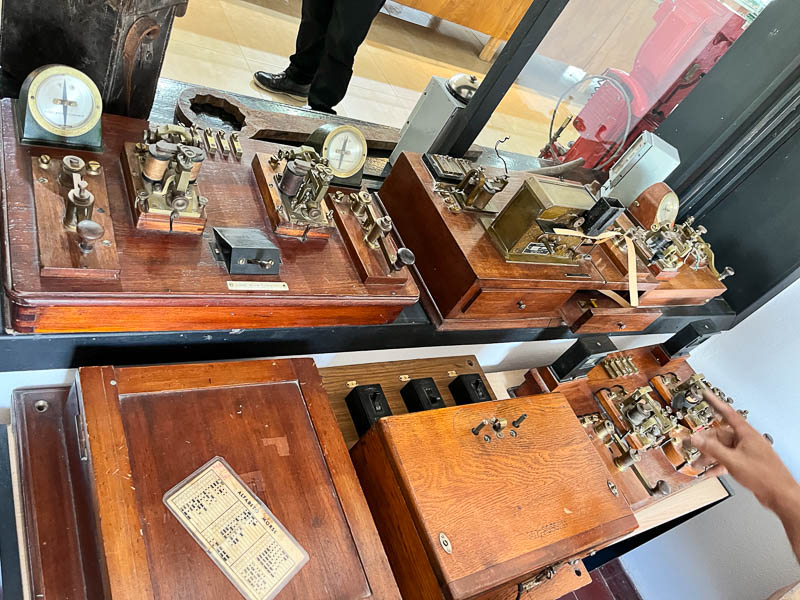
The bus was new and comfortable and nearly empty. Leon, an experienced Flixbus customer, was astonished about the luxury encountered here.
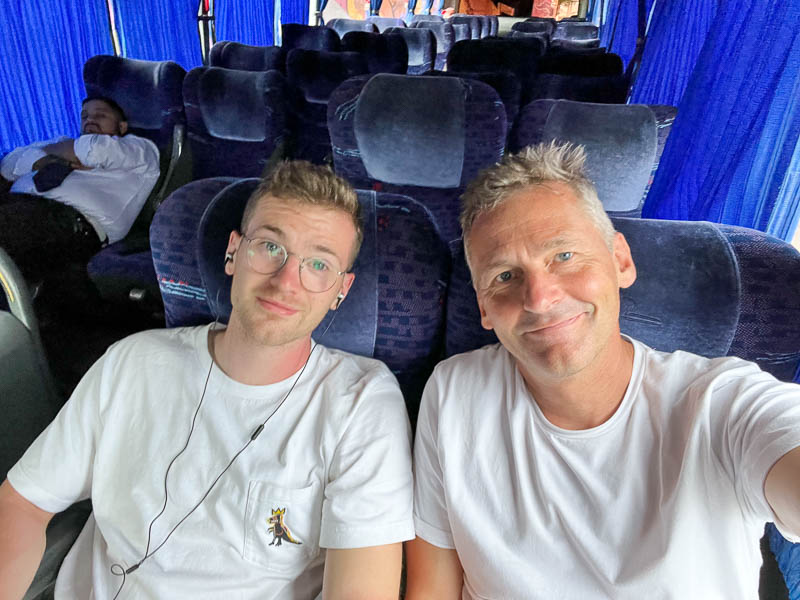
Overhead screens showed continuous B-movie action videos. The landscape outside was boring and flat. When we arrived in Mendoza, it was already dark. We booked a hotel, just around the corner of the central train station.